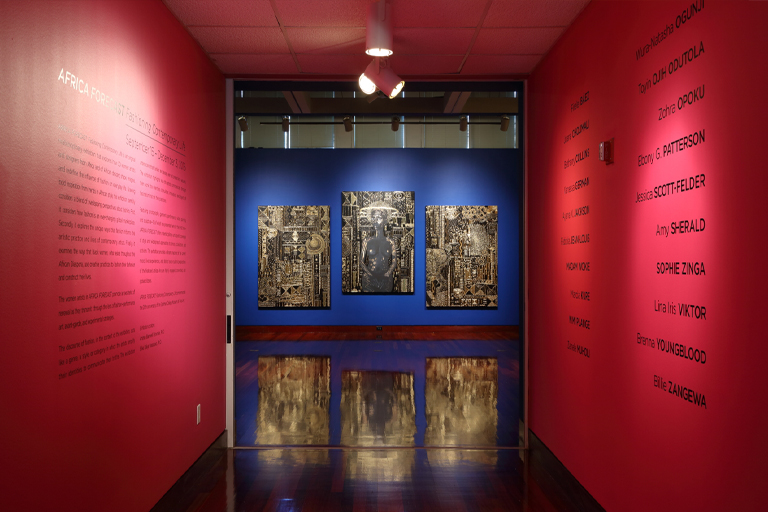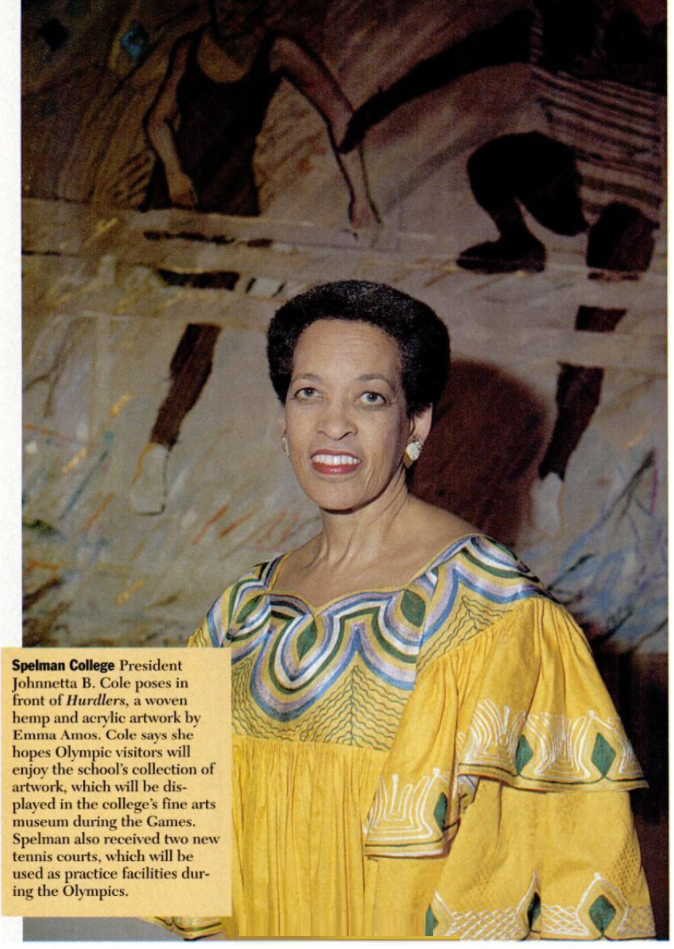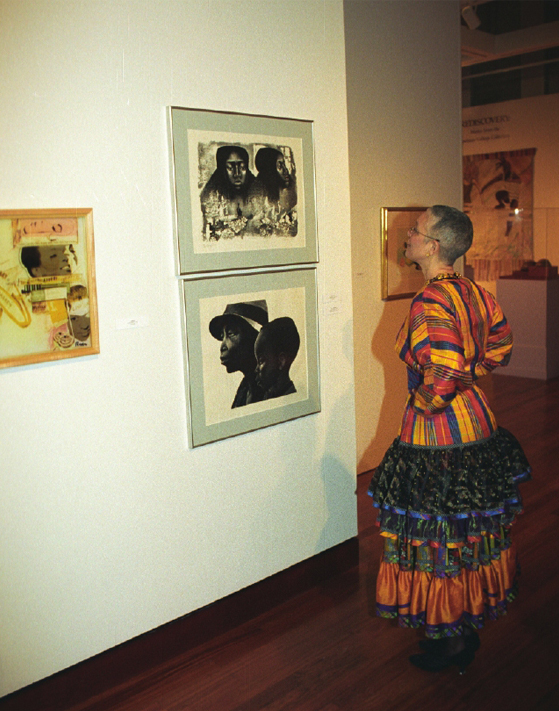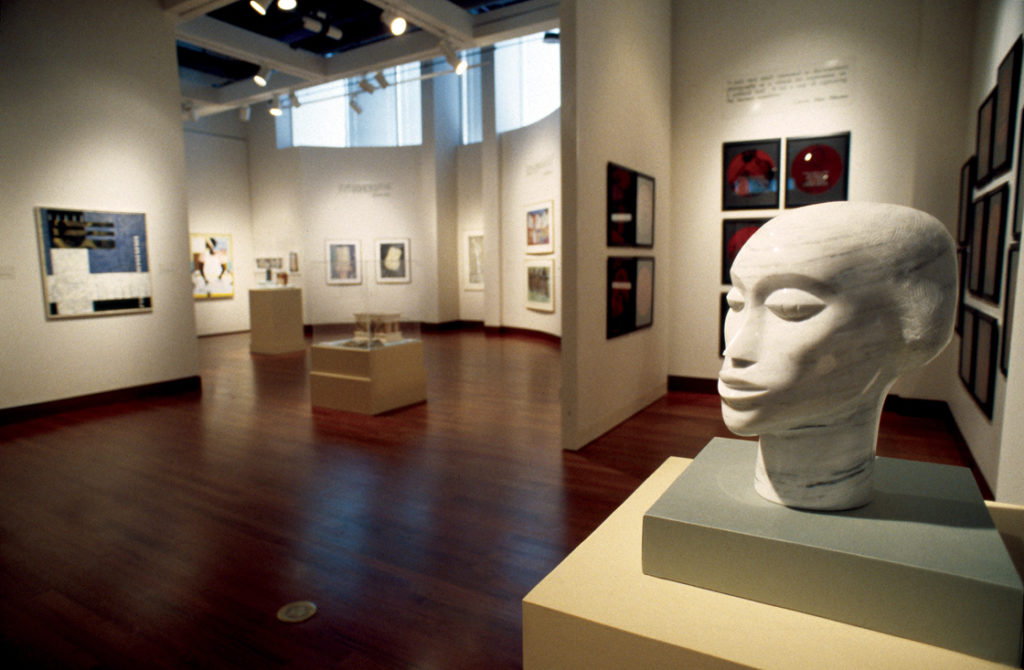The Spelman College Museum of Fine Art inspires and enriches the Spelman College community and the general public, through art by and about women of the African Diaspora.
The Spelman College Museum of Fine Art, which is located on the first floor of the Camille Olivia Hanks Cosby, Ed.D., Academic Center, has been a vital resource for the Spelman community and beyond since it opened in 1996. Initial plans for the Museum were spearheaded by arts faculty who believed that visual art is an essential component of a liberal arts education and that it plays a significant role in encouraging the intellectual growth and development of students. With its unwavering commitment to Black women artists, the Museum has become a unique hub for the Spelman community and the Atlanta University Center.
Working collaboratively with departments including Art & Visual Culture, Anthropology and Sociology, the African Diaspora and the World Program, Women’s Studies, English, and many others, the Museum heightens pedagogical learning, integrates object-based learning into the academic curriculum, and fosters a lifelong and interdisciplinary engagement with visual art. The Museum has a growing reputation for presenting projects that are bold, daring, and mission-focused and expands art offerings in Atlanta, the region, and beyond. While the Museum is a site for teaching and learning, it is open to the public and welcomes audiences beyond the Spelman community.
The Museum realizes its unique mission through its three priorities: presenting fantastically curated exhibitions, organizing dynamic and empowering programs, and expanding its relevant collection.
Since the Museum opened in 1996, it has been recognized for groundbreaking and scholarly exhibitions, which amplify art by Black women artists, including Bearing Witness: Contemporary Works by Black Women Artists (1996), Cinema Remixed & Reloaded: Black Women Artists and the Moving Image Since 1970 (2007), Maren Hassinger. . . Dreaming (2015), and Deborah Roberts: The Evolution of Mimi (2018) to name a few. It also presents original projects such as Hale Woodruff, Nancy Elizabeth Prophet, and the Academy (2007) that examine the Atlanta University Center’s profound legacy.
Alumnae, trustees, and Friends began gifting works of art to the College in the 1930s. Works of art, primarily painting and sculpture, were housed in dormitories, academic buildings, and administrative offices for several decades. When the Museum was established in 1996, campus-wide distribution of art was disbanded and the Museum became the repository for the Spelman College collection. Learn how the College began actively collecting works by Black women artists in the 1980s and its current emphasis on acquiring works by emerging, mid-career, and established artists.




To inspire and enrich the Spelman College community and the general public primarily through art by and about women of the African Diaspora.
Mailing address:
350 Spelman Lane, Box 1526
Atlanta, GA 30314 29201
Phone: 404.270.5607
Email: museum@spelman.edu
February 2 – May 24, 2024
Wednesday – Saturday
12pm – 5pm
The Museum is Closed Sundays, Mondays, Tuesdays, Holidays and Spelman campus breaks.